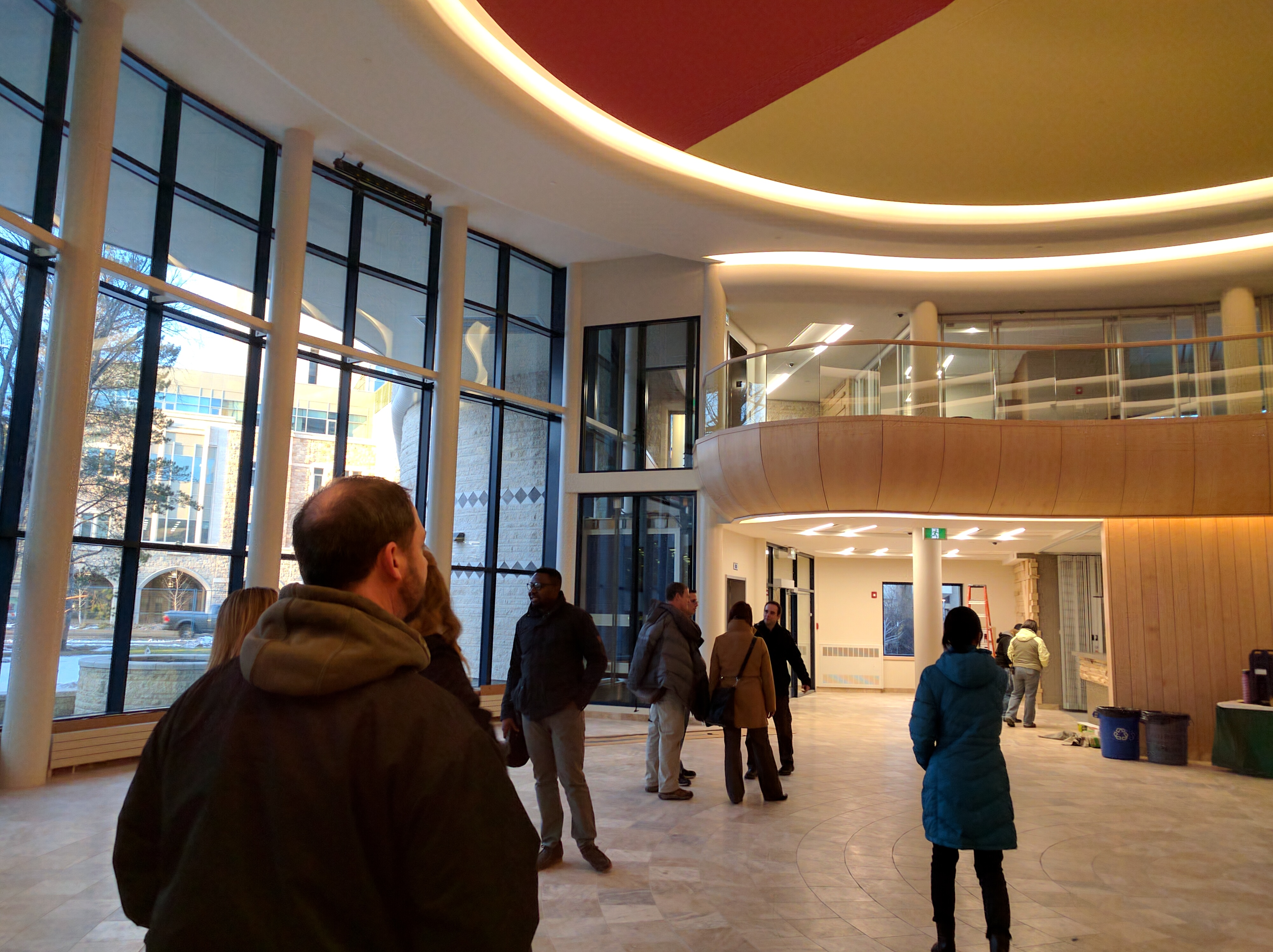Power Hour Puts Employees in Charge
A Work Green initiative started at the Parking and Transportation Services shows how employees can take sustainability and behaviour change into their own hands.
By Matt WolsfeldThe Office of Sustainability’s Work Green program has been a great success over the past year, amassing 36 green champions in unique workplaces around the university. We do our best to provide support and resources for these champions to help their co-workers make the move to sustainable practices, but we love it best when they take the action into their own hands. Joanna Winichuk – our Work Green Champion at Parking and Transportation Services – did just that by bringing a new concept to their office: the Power Hour.
Power Hour is a simple concept: the office chooses an hour of time to turn off all the lights in the building and use only the natural light available. Power Hour isn’t something that happens every day, as it depends on available light and office schedules, but it has become a regular and welcome addition to the office’s work. “Sometimes it’s over the lunch hour, sometimes it’s in the morning when the sun is up, sometimes it’s at the end of the day to give us a push before we leave,” says Winichuk. “I find the break from the office lighting to be a nice change: it saves money, it’s good for the environment, and it’s much easier on the eyes. Why not use natural lighting if it’s available?”

These sort of initiatives are small in scope and the money and energy saved are small in the grand scheme of the university’s operations. However, their importance lies not in the action itself but in the behaviours that it develops. Initiatives like Power Hour open up workplaces to the possibility of using natural light rather than electricity. When co-workers have the opportunity to test this out for themselves and see how it impacts their work (or their happiness!), it allows them to see how small changes are easy to make and add up over time.
This change has become apparent to Joanna and the PTS crew, who have started to look at Power Hour as a chance to take a break from artificial lighting rather than an energy saving measure. Joanna says what started as a small, Work Green inspired energy saving activity has become more valuable for its effect on the work atmosphere. “It actually makes a huge difference to work with natural sunlight. It just feels more relaxed. I hope more people try it out!”
Conservation does not always have to be a conscious or difficult effort. Sometimes it just proves to be the byproduct of an action that turns out to be more enjoyable than the old alternative. Don’t forget that Work Green is available to all employees at the U of S to help you find ways to make your office more sustainable. Take the opportunity today to look around your workplace and identify small changes you and your co-workers could make. Perhaps they could be the new, enjoyable normal for your campus group!
